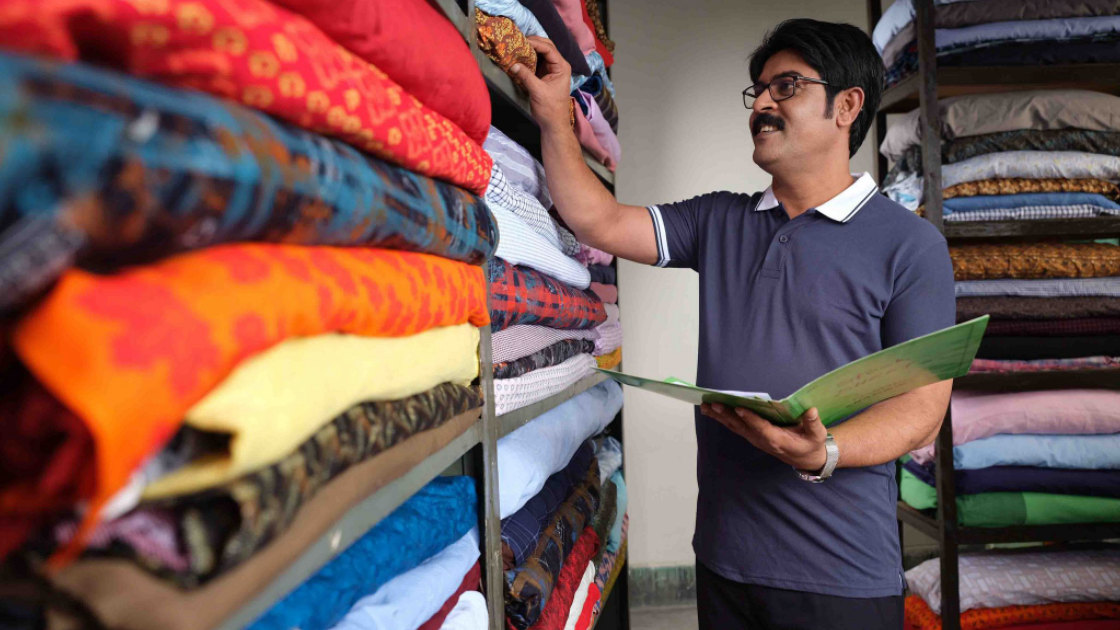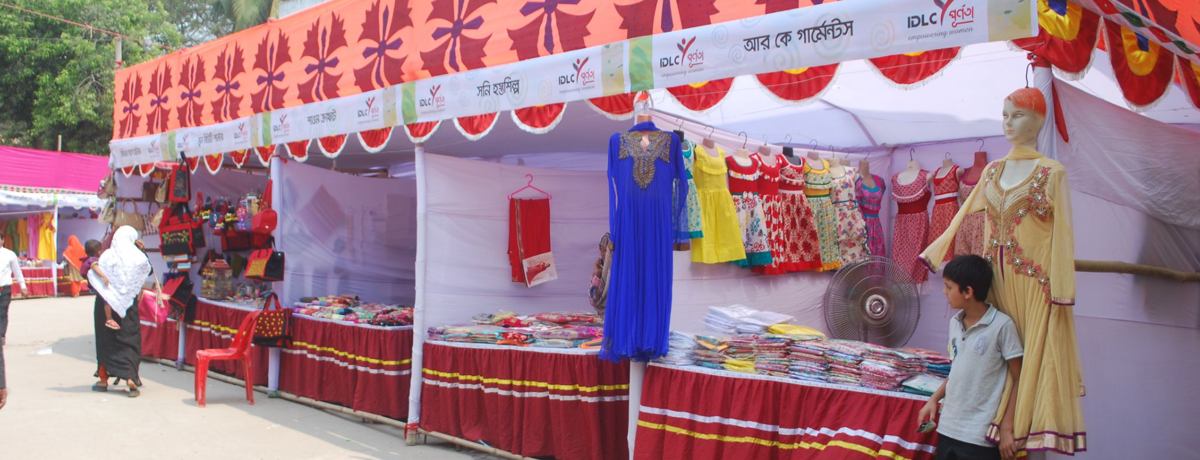
The coronavirus pandemic has hit small and medium enterprises hardest. Lockdowns forced many businesses to remain closed. As the pandemic eats into the income of working-class people, it has tanked the demand. A recent Bangladesh Institute of Development Studies (BIDS) study finds the pandemic has brought at least 16.4 million people below the poverty line in 2020.
“This is unprecedented,” says Akter Hossain, an owner of two retail outlets from Chittagong. “I have never seen anything like this in my entire life. It has been months. The coronavirus pandemic is still here and I’m not seeing any sign of abetting. People have no work. How can they shop when there is no income?"
Small businesses losing ground to the pandemic means more grim stories to follow. Stores will shut. Livelihood will be lost. Employment opportunities will dim — an Asian Development Bank (ADB) study suggests SMEs generate 70 to 80% of non-agricultural sector jobs in Bangladesh.
Mr. Hossain had to let go of four of his shop assistants and is worried about how he is going to keep the remaining four people.
“I’m worried every single day,” says Saju Ahmed, owner of Saju Gym and Fitness Center, a gathering place for exercise enthusiasts, located in Kolatoli, Cox’s Bazar.
Mr. Ahmed opened Saju Gym and Fitness Center three years ago. Apart from locals, the place attracts many tourists who visit the city throughout the year. Over the years, Mr. Ahmed has managed to build a loyal user base. Now, the doors of Saju Gym are closed.
“I had to lay off two of my assistants,” Mr. Ahmed shares. “No matter what I do, I’m worried about whether the Gym will survive.”
These entrepreneurs face not only the stresses of living through a global pandemic, but they also continue to grapple with safety issues, paying employees, all while bringing in significantly less or no revenue. “There’s so much uncertainty,” Mr. Ahmed says. “No one can get any kind of grounding.”
All of this has taken a toll. A 2020 Bangladesh Institute of Development Studies (BIDS) research finds only 16% of SMEs continued operations during the lockdown. Nearly 68% SMEs face a risk of business closure.”

In March 2020, when the first wave of the COVID-19 hit Bangladesh, small business owners braced for what seemed like a few weeks of financial pain. But as the coronavirus pandemic drags on — now in its second year — many small businesses are operating at limited capacity and others have shuttered completely.
Things returned to relative normalcy after July last year when the country reopened from lockdown. People showed great resilience. When the shops were reopened, they saw huge demand, tourist spots attracted people in large swaths, which helped many businesses to start a recovery process.
“The second wave we are enduring now, however, is going to jeopardize the recovery for most SMEs,” says Arifur Rahman, a Products and Channel Development Head at IDLC Finance.
For most SMEs, two Eids and festivals seasons play a significant role in sales. “Last year, we lost almost all festival sales including Boishak, and two Eids to the pandemic,” says Mr. Hossain, the retail entrepreneur. “This year, the second wave started prior to the Pohela Boishakh, it continues as people prepare for the Eid-ul-Fitr.”
The pandemic has affected businesses in almost every sector. To help us realize the precarity of the situation, Mr. Arif explains “PAR” (Portfolio at risk) to us, a parameter financial institutions use to measure which businesses in their portfolio are doing well and which are not.
For IDLC, which has one of the largest portfolios in the SME sector in the country, in normal times, the PAR stands at 6-8%. The percentage has sharply risen since the beginning of the pandemic.
“The percentage of customers under the PAR category has risen to over 30%,” says Mr. Arif. “Our prediction suggests, if this situation persists, many SMEs will go out of business by the end of this year.”
To be clear, PAR is not NPL. If any client fails to make payment in a month, he/she is then considered in PAR. On the other hand, the clients who do not pay six (06) EMIs are considered as NPL as per guidelines by Bangladesh Bank. IDLC has one of the lowest NPL in SME, only 2.12%.
A plethora of initiatives have been taken to support businesses to fend off the effect of the pandemic. The Bangladesh Government has announced several stimulus packages. The central bank has instructed financial institutions to treat loan repayment flexibly. IDLC has also taken its own initiatives.
“In 2020, we did not put any pressure on our customers for the EMIs during the two-month-long general holidays,” says Mr. Arif. “We maintain communication with our customers to make sure they are okay. Apart from disbursing Government pandemic stimulus packages, we continued to extend financing from our own deposit portfolio of IDLC for the impacted customers.”
The NBFI sector was allotted around BDT 600Cr as part of the pandemic stimulus package. IDLC received and disbursed more than half of the allotted fund because of its large SME portfolio. The company has received another BDT 30Cr fund from the SME Foundation, a part of a BDT 100Cr stimulus package from the Bangladesh Bank provided to the SME Foundation to support rural SMEs. The fund has proven to be useful for rural SMEs who often struggle to access proper support. Women entrepreneurs also received priority in all these initiatives — 15% of the fund went to the women entrepreneurs according to the policy guideline from the Bangladesh Bank.
IDLC has taken a multidisciplinary approach to support SMEs throughout the pandemic — a combination of both financial and non-financial support.
Towards the end of 2020, in collaboration with SME Foundation and iDE Global, IDLC provided training to over 800 small entrepreneurs from South and North Bengal. The company plans to continue to collaborate with SME Foundation to support SMEs across sectors.
We are as good as our margin of errors. This is more appropriate when we are dealing with risks and crises. When you have a high margin of errors, you can tolerate high levels of uncertainty. This is what Nassim Nicholas Taleb calls antifragility. Antifragile means you don’t fall apart when things don’t go according to plan or an unexpected crisis takes place. You have enough cushion in place to offer you a cover. For businesses, this means you have enough cash at hand to weather an uncertain situation.
“From our observation, we have seen businesses that saved money before have managed to navigate the pandemic better compared to those who did not”, observes Mr. Arif.
Mr. Arif says this is one of the lessons he has learned from the pandemic. It is usually difficult for small businesses to save money because they run on tight budgets. Others reinvest in growth. But pandemic has proven that businesses should consider keeping a buffer for future uncertainties.
The second group of businesses that did relatively well is the ones who diversified their business. “For most SMEs, diversification is hard,” says Mr. Arif. But skilled entrepreneurs often find ways to diversify as a hedge for uncertainties. “Entrepreneurs who have diversified their business at least into local markets have done better than others.”
That being said, nothing prepares you for a once-in-a-hundred-year pandemic. Few businesses can survive a prolonged period of business shutdown and a consistent slump in demand. The support from the government and other partners has been instrumental in helping SMEs survive through the pandemic until now. But Mr. Arif suggests, and experts across the board agree, we have to find sustainable ways to deal with the virus.
“If the lockdown continues, it will be hard for small businesses to survive.” Mr. Arif suggests a more practical approach would be to encourage people to maintain health regulations and open things up with proper safety measures.
Mr. Hossain, the retail businessman we heard earlier, agrees: “when your business is not earning anything, putting more money is like pouring aid in the sieve.”
“The government should continue supporting SMEs,” says Mr. Arif. “The previous support initiatives such as BDT 600Cr stimulus fund for NBFIs was a big help for the businesses. At the same time, we should find ways to keep the businesses open on a limited scale.”
SMEs create livelihoods and opportunities and are the bloodline of Bangladesh's economy. The sector contributes 25% to GDP, employs a staggering 7.8 million people, and provides livelihood to many more millions. If SMEs fail, it will send a shock wave through our economy and society. To that end, the critical importance of designing interventions that will help save SMEs amid this extraordinary time in history.
“At the same time,” reflects Mr. Arif, “we are living through an uncertain time. Everyone should prepare since we don’t know what’s coming. Small business owners need to look into how to minimize costs and operate frugally. Strategic resource allocation and maximum utilization of whatever resources one has would be key to survival.”

